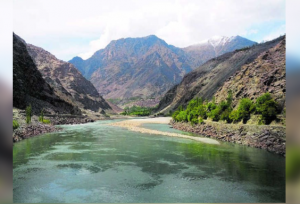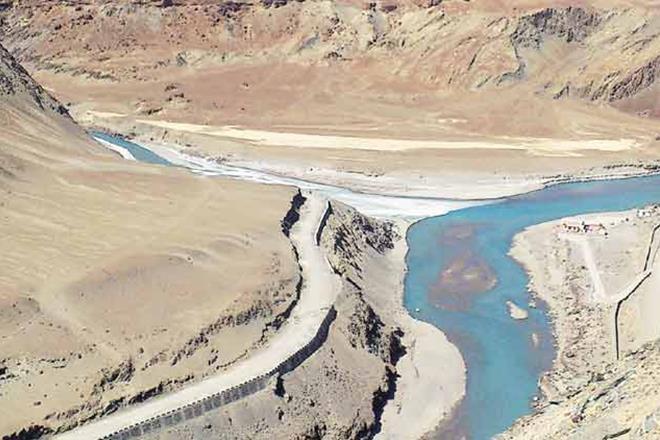India suspends Indus Waters Treaty: A turning point?

Patit Mandal, OP
In a sharp response to the Pahalgam terrorist attack that killed 26 Indian civilians, India has announced the suspension of the Indus Waters Treaty (IWT) with Pakistan.
The Centre plans to study ways to maximise the use of water from the three rivers previously allotted to Pakistan under the now-suspended Indus Waters Treaty, officials said. The proposal came at a high-level meeting Friday, chaired by Home Minister Amit Shah, to discuss the treaty’s future.
The decision has sparked strong reactions on both sides of the border, with many interpreting it as a game-changing strategic move.
However, a closer look at the ground realities reveals that practical limitations mean immediate disruption to Pakistan’s water supply is highly unlikely.
Let’s dive into the nitty-gritty of what this suspension really means.
What is Indus Waters Treaty?
Signed in 1960 with the World Bank’s mediation, the IWT governs the use of waters from six rivers in the Indus basin. Under its terms, India controls the Eastern Rivers — Ravi, Beas, and Sutlej — while Pakistan has rights over the Western Rivers—Indus, Jhelum, and Chenab. India can use the Western Rivers for irrigation and hydroelectricity within strict technical limits, but it cannot significantly obstruct the flow.
For over six decades, the treaty has weathered wars and diplomatic tensions, often hailed globally as a model of cooperation over shared water resources.
Why is suspension more symbolic than immediate?
While India’s announcement is diplomatically significant, turning off the tap to Pakistan is far easier said than done. Here’s why:
1. India’s lack of infrastructure
 Pic- PTI
Pic- PTI
India simply does not have the storage or diversion infrastructure needed to hold back or redirect the flow of the Indus, Jhelum, and Chenab rivers.
India’s current dams and barrages on the western rivers Indus, Jhelum, and Chenab and their tributaries can store less than 1 million acre-foot (MAF), according to news agency PTI.
The major dams on these rivers—like Baglihar and Kishanganga—are run-of-the-river projects. They generate hydroelectricity but cannot store large amounts of water.
Building new storage facilities or diversion tunnels would take years of construction, environmental clearances, and significant investment.
India’s most recent dams on mountainous terrain include the Kishanganga, Pakal Dul, and Nimoo Bazgo. Each took between 5 and 11 years to build.
Without massive infrastructure, any attempt to block river flows would either be unsuccessful or cause the backwater flooding upstream within India’s own territory, particularly in parts of Jammu and Kashmir.
2. Natural flow dynamics
Rivers like the Indus and the Jhelum swell dramatically during the summer months due to Himalayan snowmelt.
Even if India had the technical means, attempting to hold back the surge of water during the peak flow season (May–September) would be dangerous and counterproductive, leading to catastrophic flooding in Indian-administered areas.
3. Legal and diplomatic hurdles
The Indus Waters Treaty is binding under international law, with no unilateral exit clause. While India has declared a suspension, it is not a formal withdrawal, leaving it vulnerable to accusations of treaty violation if actions escalate.
Moreover, the IWT is held up globally as a model for conflict resolution in water sharing. Unilateral disruptions could damage India’s international credibility and impact future negotiations with neighbours like Bangladesh and China, who also share rivers with India.
Pakistan, although with limited options, could still rally diplomatic support or invoke international forums to raise the issue, putting India in a defensive position globally.
What this means for Pakistan
 (Image: PTI)
(Image: PTI)
In the short term, Pakistan’s water flows are unlikely to be affected.
Agriculture in Pakistan’s Punjab and Sindh provinces, which depends heavily on Indus waters, can continue for now.
In the long term, however, uncertainty about India’s future actions could complicate agricultural planning, particularly for crops reliant on consistent irrigation.
Pakistan’s limited water storage capacity — Mangla and Tarbela dams — hold only about 10% of annual river flows, making it vulnerable if India, over time, develops capabilities to divert or delay water flows.
According to a report, Pakistan has long said that any attempt by India to construct major new storage on the western rivers would be viewed as an act of war. In today’s age of satellites, these structures would not be invisible. They would be contested politically and possibly militarily.
Strategic gains for India, but over the long term
- Suspension of the treaty gives India theoretical control over the Western Rivers, allowing:
- Faster progress on long-delayed hydroelectric projects like Pakal Dul, Ratle, and Kiru.
- Greater say in flood management and timing of water release.
However, to actually use this leverage, India must first:
- Build the necessary dams and reservoirs.
- Expand its irrigation and canal networks.
- Manage its own flood risks carefully.
- These tasks are multi-year projects, not overnight victories.
Conclusion
The reality is, the rivers will continue flowing — for now. Infrastructure gaps, natural river dynamics, and legal complexities mean that the treaty’s suspension is largely symbolic at present.
Both nations must now navigate these turbulent waters with caution, foresight, and respect for the long-standing, fragile frameworks that govern their shared resources.
News